Private Day Tour
Private Tour is simply translated into greater flexibility, better comfort, and personalized service so you can experience the Orient the way you have always dreamt of it to be. There is no comparison when it comes to the overall experience between a typical group tour and a private tour. Here are some distinctive differences:
Guaranteed Departures, Flexibility, Maximize your time, Personalized Service, Travel with the people you love.
we provide numerous private day tour services
Ranakpur Kumbhalgarh Day Tour
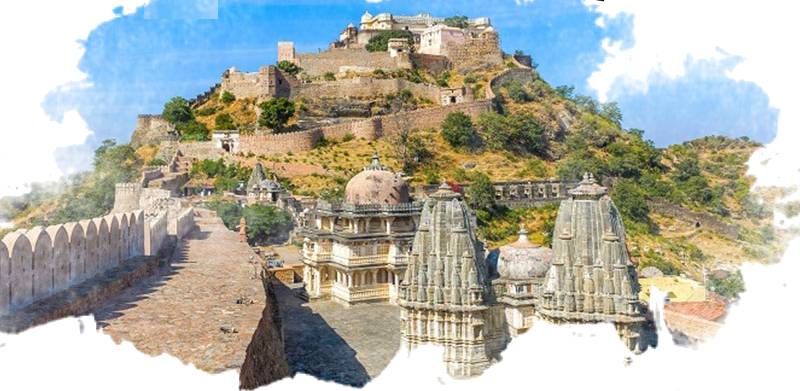
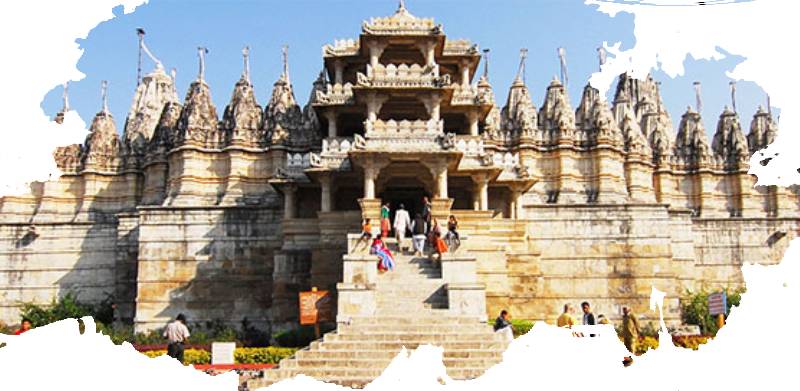
Ranakpur has Beautiful sculptured Jain temples mark the glory of this renowned place. Marked as one of the five holy places for the Jain community, these were created in the 15th century.
During the reign of Rana Kumbha and are enclosed within a wall. The central Chaumukha [four faced temple] is dedicated to Adinathji the temple is an astounding creation with 29 halls and 1,444 pillars all distinctly carved and no two being alike is amazing evidence of the genius sense of architecture that enhances the charm of the place. Every temple has this conceivable surface carved with equal delicacy.
The ambience of Ranakpur is mainly highlighted by the location and the almost divine architecture, giving the same hue as its counterpart – the great Dilwara Temple’s. in Mt-Abu. Facing the main temple are the unique temples -Parasvanath – Neminath with exquisite figures carving similar to that Khujaraho sculptures. Another temple worth visiting is the nearby ‘Sun Temple’ dedicated to the ‘Sun God’ (Surya-the master of all the planets and the provider of light to the whole universe) adorned with polygonal wall, richly embellished with the carvings of warriors, horses and solar (Nakshatras, grahs’) deities riding splendid ‘chariots’ the vehicle of the ‘Sun God’- which accordingly to the Hindu Mythology is the God of prosperity and a shining destiny in this world. Many throng this shrine for these blessings. Overall Ranakpur is known as ‘ The tranquil pilgrimage town’. For the buffs a ride to the outskirts like ‘ Sadari’ – ‘Desuri’- ‘Ghanerao’- ‘Narhai’, serves the purpose of their satisfaction.
Kumbhalgarh Located 84 kms north of Udaipur in the wilderness, Kumbhalgarh is the second most important citadel after Chittorgarh in the Mewar region. Cradled in the Aravali Ranges the fort was built in the 15th century by Rana Kumbha. Because of its inaccessibility and hostile topography the fort had remained un-conquered.
It also served the rulers of Mewar as a refuge in times of strife. The fort also served as refuge to the baby king Udai of Mewar. It is also of sentimental significance as it is the birthplace of Mewar’s legendary King Maharana Partap. The fort is self-contained and has within its amalgam almost everything to withstand a long siege.
The fort fell only once that too to the combined armies of Mughal and of Amber for scarcity of drinking water. Many magnificent palaces an array of temples built by the Mauryas of which the most picturesque place is the Badal Mahal or the palace of the clouds.
The fort also offers a superb birds view of the surroundings. The fort’s thick wall stretches some 36 kms and is wide enough to take eight horses abreast. Maharana Fateh Singh renovated the fort in the 19th century. The fort’s large compound has very interesting ruins and the walk around it can be very rewarding.
Nathdwara Haldighati Day Tour
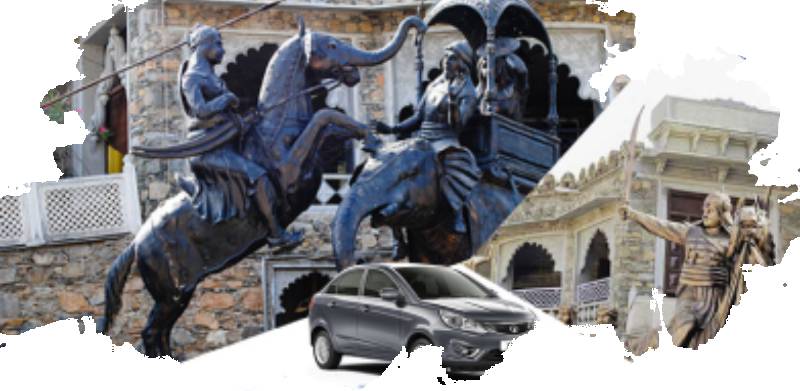
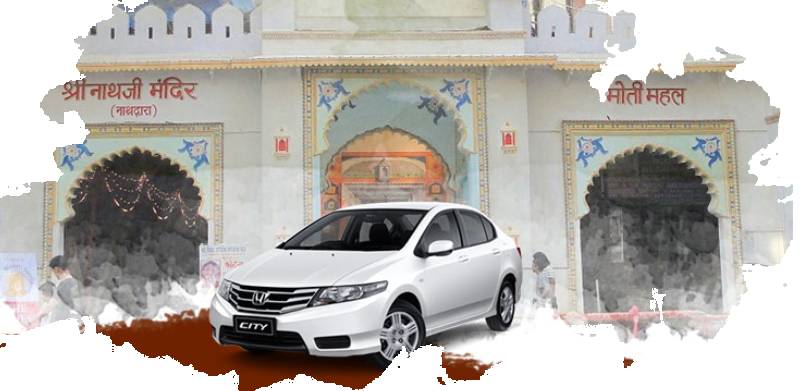
Haldighati 45 kilometres from Udaipur, this museum tells the story of the battle of Haldighati between the Rajput warrior Maharana Pratap and the Mughals (led by Maan Singh I on behalf of emperor Akbar) which was fought in the valley of Haldighati in 1576. The museum is built at a distance from the actual location of Haldighati.
The museum displays several paintings, murals and bronze statues which depict scenes from the bloody battle. There are also specimens of swords and armours, carefully preserved for all to see.
Haldighati Museum runs a short film which tells the story of Maharana Pratap, his faithful mount – Chetak, and the battle of Haldighati. The museum complex also has a garden behind it, and a cafeteria which serves full meals as well.
Nathdwara Nathdwara is a town in India’s western state of Rajasthan. It is located in the Aravalli hills, on the banks of the Banas River in Rajsamand District, 48 kilometres north-east of Udaipur. This town is famous for its temple of Krishna which houses the deity of Shrinathji, a 14th-century, 7-year-old “infant” incarnation of Krishna.
Eklingji Temple Built in the 8th century A.D., Eklingji Temple is dedicated to the Hindu deity of Eklingji, another moniker for the well recognized name – Shiva. The black stone statue of Eklingji at this shrine is 50 feet tall has 4 heads, each denoting a form of Shiva. The 4 forms here are Surya, Brahma, Vishnu and Rudra. There are also statues of Shiva’s wife (Parvati) and his 2 sons – Kartik and Ganesha.
At the entrance of the temple, there is a statue of the Hindu bull deity – Nandi. According to mythology, Nandi guards the gate to Mount Kailash (the abode of Shiva).
Udaipur Chittorgarh Day Tour
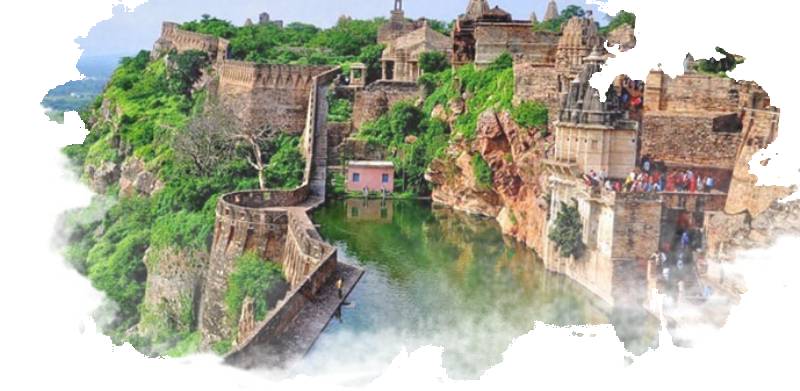
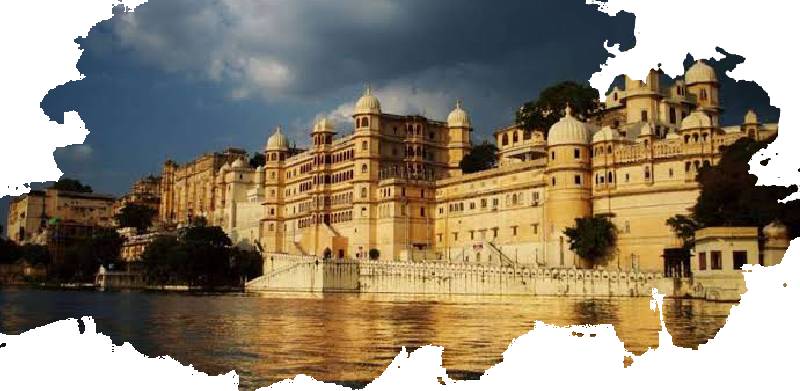
Udaipur, also known as the City of Lakes, is the crown jewel of the state of Rajasthan. It is surrounded by the beautiful Aravalli Hills in all directions, making this city as lovely as it is. This ‘Venice of the East’ has an abundance of natural beauty, mesmerising temples and breathtaking architecture which makes it a must-visit destination in India.
Places Covered: City Palace, Jagdish Temple, Lake Pichola, Fateh Sagar Lake, Bhartiya Lok Kala Mandal, Saheliyon ki Bari, Bagore ki Haveli, Monsoon palace (Sajjan Garh)Our full day Udaipur sightseeing tour covers all interesting and popular tourist attractions includes Udaipur City Palace, Shree Jagdish Temple, Dudh Talai, Lake Pichola, Fateh Sagar Lake, Saheliyon ki Bari, Moti Magri, Sukhadiya Circle and Monsoon Palace – Sajjangarh.
Chittorgarh is the epitome of Rajput pride, romance and spirit. It reverberates with history of heroism and sacrifice, which is evident as it echoes with the tales sung by the Bards of Rajasthan. The main reason for visiting Chittorgarh is its massive hilltop fort, which is a depiction of Rajput culture and values. The fort stands on a 240-hectares site on an 180m high hill that rises rapidly from the plains below.
Thrice a stronger enemy sacked Chittorgarh. The first sack occurred in 1303 when a Pathan King Ala-ud-din Khilji overwhelmed by the beauty of Queen Padmini besieged the fort in order to capture the regal beauty. In 1535 Bahadur Shah the Sultan of Gujarat besieged the fort causing immense carnage and it is said that 32000 men donned the saffron robes of martyrdom and rode out to face a certain death, and the women folkes committed Jauhar (an act of self-immolations by plunging in a large fire) led by Rani Karnawati.
Udaipur Mount Abu Day Tour
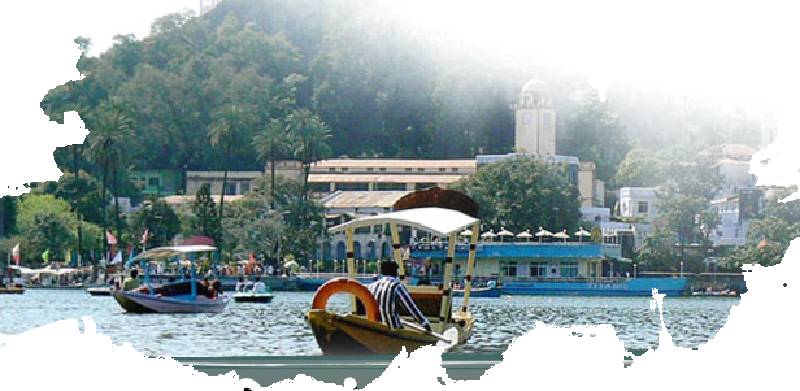

Udaipur, also known as the City of Lakes, is the crown jewel of the state of Rajasthan. It is surrounded by the beautiful Aravalli Hills in all directions, making this city as lovely as it is. This ‘Venice of the East’ has an abundance of natural beauty, mesmerising temples and breathtaking architecture which makes it a must-visit destination in India.
Places Covered: City Palace, Jagdish Temple, Lake Pichola, Fateh Sagar Lake, Bhartiya Lok Kala Mandal, Saheliyon ki Bari, Bagore ki Haveli, Monsoon palace (Sajjan Garh)Our full day Udaipur sightseeing tour covers all interesting and popular tourist attractions includes Udaipur City Palace, Shree Jagdish Temple, Dudh Talai, Lake Pichola, Fateh Sagar Lake, Saheliyon ki Bari, Moti Magri, Sukhadiya Circle and Monsoon Palace – Sajjangarh.
Mount Abu is The only hill station of Rajasthan, its cool atmosphere and lush green surroundings make it a major tourist spot within the state. The most important attraction, however, are undoubtedly the Dilwara temples, which is one of the most stunning piece of architecture in the country. If you are a history or architecture buff, this is one of the places you should absolutely not miss out in India.
The exceptionally intricate architecture of the Dilwara temples are of course the main attraction here, and you can easily spend hours wondering how these temples were built over 2 centuries, almost a 1000 years back. The temples were specifically made so that they are plain from the outside to avoid attraction of plunderers, and have withstood the test of time extremely well. If architecture is not your thing, then there are various lakes and viewpoints such as the Honeymoon Point, Sunset Point, etc. Tourists enjoy calm and relaxed boating in the Nakki lake, and a view of the sunset from the Sunset point. The highest peak of the Aravali Range also lies in Mt. Abu, surrounded by dense green forests. Mt Abu will offer you all you can demand from a popular and typical destination of a romantic and simpler nature.
Car Rental
- Udaipur Car RentalFebruary 13, 2019
- Pushkar Car RentalFebruary 13, 2019
- Jodhpur Car RentalFebruary 13, 2019
- Udaipur Car Rental
Connect to Us


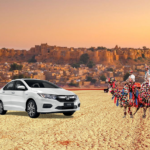
 Contact
Contact